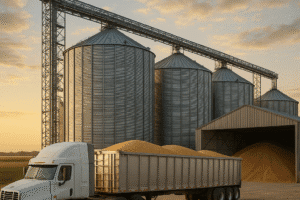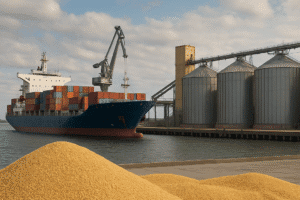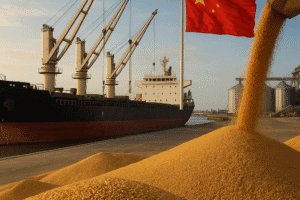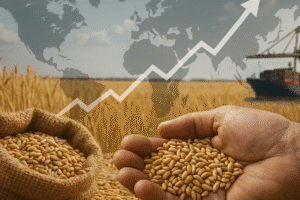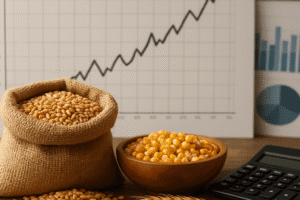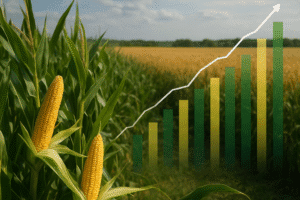Grain quality standards play a crucial role in shaping international trade dynamics, influencing everything from pricing to market access. As countries engage in the global marketplace, the quality of grains becomes a significant factor that determines competitiveness and consumer trust. This article delves into the various aspects of grain quality standards, their implications for international trade, and the challenges and opportunities they present for producers and exporters alike.
Understanding Grain Quality Standards
Grain quality standards are established criteria that define the characteristics of grains, including their physical, chemical, and biological properties. These standards are essential for ensuring that grains meet the safety and quality expectations of consumers and regulatory bodies. Various organizations, both governmental and non-governmental, set these standards, which can vary significantly from one country to another.
The Role of International Organizations
International organizations such as the Food and Agriculture Organization (FAO) and the Codex Alimentarius Commission play a pivotal role in developing and promoting grain quality standards. They provide guidelines that member countries can adopt to harmonize their standards, facilitating smoother trade relations. The adoption of these international standards helps to reduce trade barriers and ensures that grains exported from one country can be accepted in another.
National Standards and Regulations
In addition to international guidelines, individual countries often have their own specific standards for grain quality. These national standards can include parameters such as moisture content, grain size, color, and the presence of contaminants. For instance, the United States Department of Agriculture (USDA) has established grading systems for various grains, which help farmers and exporters determine the market value of their products. Compliance with these standards is crucial for accessing international markets, as buyers often require specific quality assurances before making purchases.
The Impact of Grain Quality on Trade
The quality of grains significantly influences international trade in several ways. High-quality grains can command premium prices, while lower-quality grains may struggle to find buyers. This section explores how grain quality affects pricing, market access, and trade relationships.
Pricing Dynamics
Grain quality directly impacts pricing in the global market. Higher quality grains, which meet or exceed established standards, are often sold at a premium. For example, premium varieties of wheat or rice that are free from defects and contaminants can fetch higher prices compared to lower-grade counterparts. This pricing dynamic incentivizes producers to invest in quality improvement practices, such as better farming techniques and post-harvest handling.
Market Access and Competitiveness
Access to international markets is heavily influenced by grain quality standards. Countries that adhere to stringent quality requirements are more likely to gain entry into lucrative markets. For instance, the European Union has strict regulations regarding pesticide residues and contaminants in grains. Exporters from countries that do not meet these standards may find themselves excluded from these markets, limiting their trade opportunities. Conversely, countries that invest in meeting international quality standards can enhance their competitiveness and expand their market reach.
Trade Relationships and Trust
Grain quality standards also play a vital role in building trust between trading partners. Consistent adherence to quality standards fosters confidence among buyers and sellers, leading to long-term trade relationships. When exporters consistently deliver high-quality grains, they establish a reputation that can lead to repeat business and referrals. On the other hand, failure to meet quality expectations can damage relationships and result in financial losses.
Challenges in Maintaining Grain Quality Standards
While grain quality standards are essential for facilitating international trade, maintaining these standards presents several challenges. This section examines some of the key obstacles faced by producers and exporters in ensuring grain quality.
Environmental Factors
Environmental conditions, such as climate change, can significantly impact grain quality. Extreme weather events, such as droughts or floods, can lead to reduced yields and compromised grain quality. For instance, excessive rainfall during the harvest season can result in mold and mycotoxin contamination, making the grains unsuitable for export. Producers must adapt to these changing conditions by implementing sustainable farming practices and investing in resilient crop varieties.
Technological Advancements
Advancements in technology have the potential to improve grain quality, but they also present challenges. While modern agricultural techniques, such as precision farming and genetic modification, can enhance yields and quality, they may also lead to increased costs for producers. Smallholder farmers, in particular, may struggle to access the latest technologies, putting them at a disadvantage in the global market. Ensuring equitable access to technology is crucial for maintaining quality standards across the board.
Regulatory Compliance
Compliance with both national and international quality standards can be a complex and costly process. Producers and exporters must navigate a maze of regulations, which can vary significantly between countries. This complexity can lead to confusion and unintentional non-compliance, resulting in rejected shipments and financial losses. Streamlining regulatory processes and providing support for compliance can help mitigate these challenges.
Future Trends in Grain Quality Standards
The landscape of grain quality standards is continually evolving, influenced by changing consumer preferences, technological advancements, and global trade dynamics. This section explores some of the emerging trends that are likely to shape the future of grain quality standards.
Increased Focus on Sustainability
As consumers become more environmentally conscious, there is a growing demand for sustainably produced grains. This trend is prompting the development of new quality standards that emphasize sustainability, including criteria related to environmental impact, social responsibility, and ethical sourcing. Producers who can demonstrate their commitment to sustainable practices may gain a competitive edge in the market.
Digitalization and Traceability
The rise of digital technologies is transforming the grain supply chain, enhancing traceability and transparency. Blockchain technology, for example, allows for the secure tracking of grains from farm to table, ensuring that quality standards are met at every stage. This increased transparency can help build consumer trust and facilitate compliance with international standards.
Consumer Preferences and Health Considerations
Shifting consumer preferences are also influencing grain quality standards. There is a growing interest in health and nutrition, leading to increased demand for whole grains and organic products. As a result, quality standards are evolving to include nutritional criteria, pushing producers to adapt their practices to meet these new expectations.
Conclusion
Grain quality standards are a fundamental aspect of international trade, influencing pricing, market access, and trade relationships. While challenges exist in maintaining these standards, the future holds promise with emerging trends focused on sustainability, digitalization, and changing consumer preferences. By understanding and adapting to these dynamics, producers and exporters can navigate the complexities of the global grain market and thrive in an increasingly competitive landscape.
